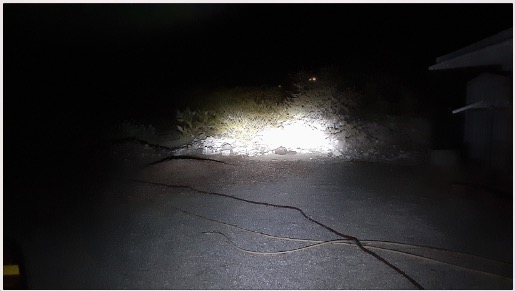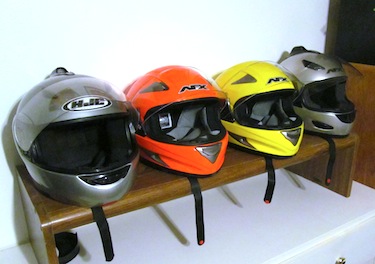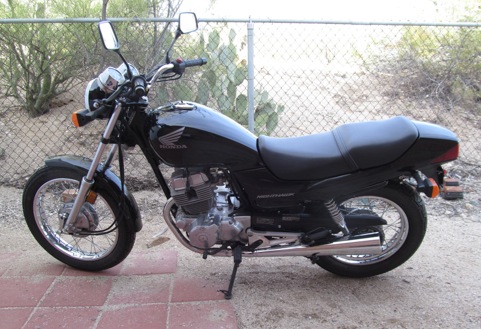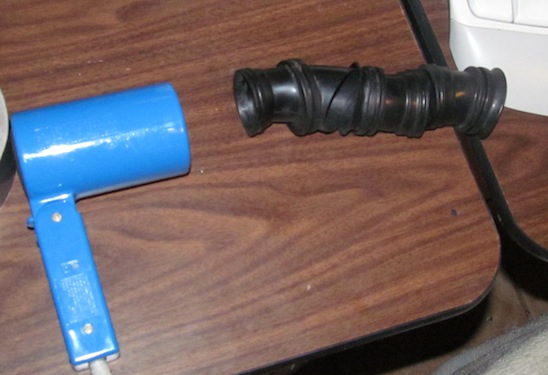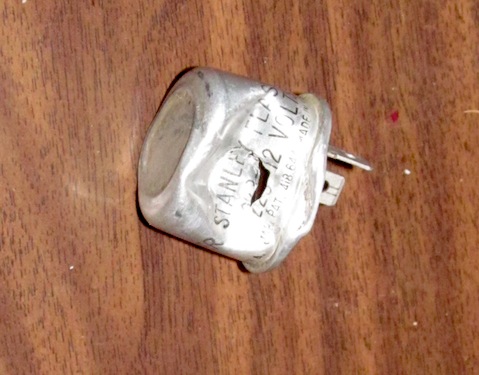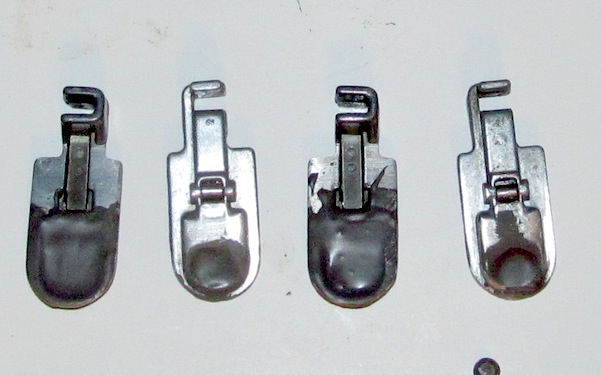After putting eveything back together several times, most recently with the radiator hose air boots, I was able to ride the bike, sync the carbs to proper inches of vacuum (10) and feel pretty good. Until I’m standing there listening to my happy idle and I hear a slight pop and a continuous hiss. Putting my head too close to the engine I can’t find out where the sound is coming from and I burn my nose. Looking at my carb sync gauges I note that my vacuum pressure has dropped from 10 down to 5 – on all the gauges. Great. Another major vacuum leak. Frustrated, and hot since it is over 95 d f outside, I called it a day and put everything away.
The next morning (October 5 for those of you following and counting days like sheep), I pull the bike back out and try to figure out where the vacuum leak is. Start up the bike, let it idle for a few minutes to get stable, and start spraying around the carb boots and intakes with WD40. What do I find? Nothing. Absolutely nothing. No engine surge or change in RPM. Just WD40 dripping off my now hot engine …
Then I remembered something I saw on the web about a guy having a problem when riding and when he opened the gas tank he heard a WHOOSHing sound. Hm…. My gas cap has made that sound plenty of times … So I get my gauges back out and hook one up. Restart the bike, 5 inches of vacuum. Open the gas tank cap while bike is running and BAM BAM Pebbles. The gauge climbs to 10 inches of vacuum. Stupid gas tank cap. Looks like the gasket seal is bad. These are $10 (cheapest) on ebay.
So I take the gasket out, visit Autozone, they have nothing. Walk across the street and visit O’Reilly Auto, and they have gasket material. So for $10 I get a bunch of different type of gasket material and I make my own gasket. It is now installed. Test start later today or tomorrow to see what happens.

